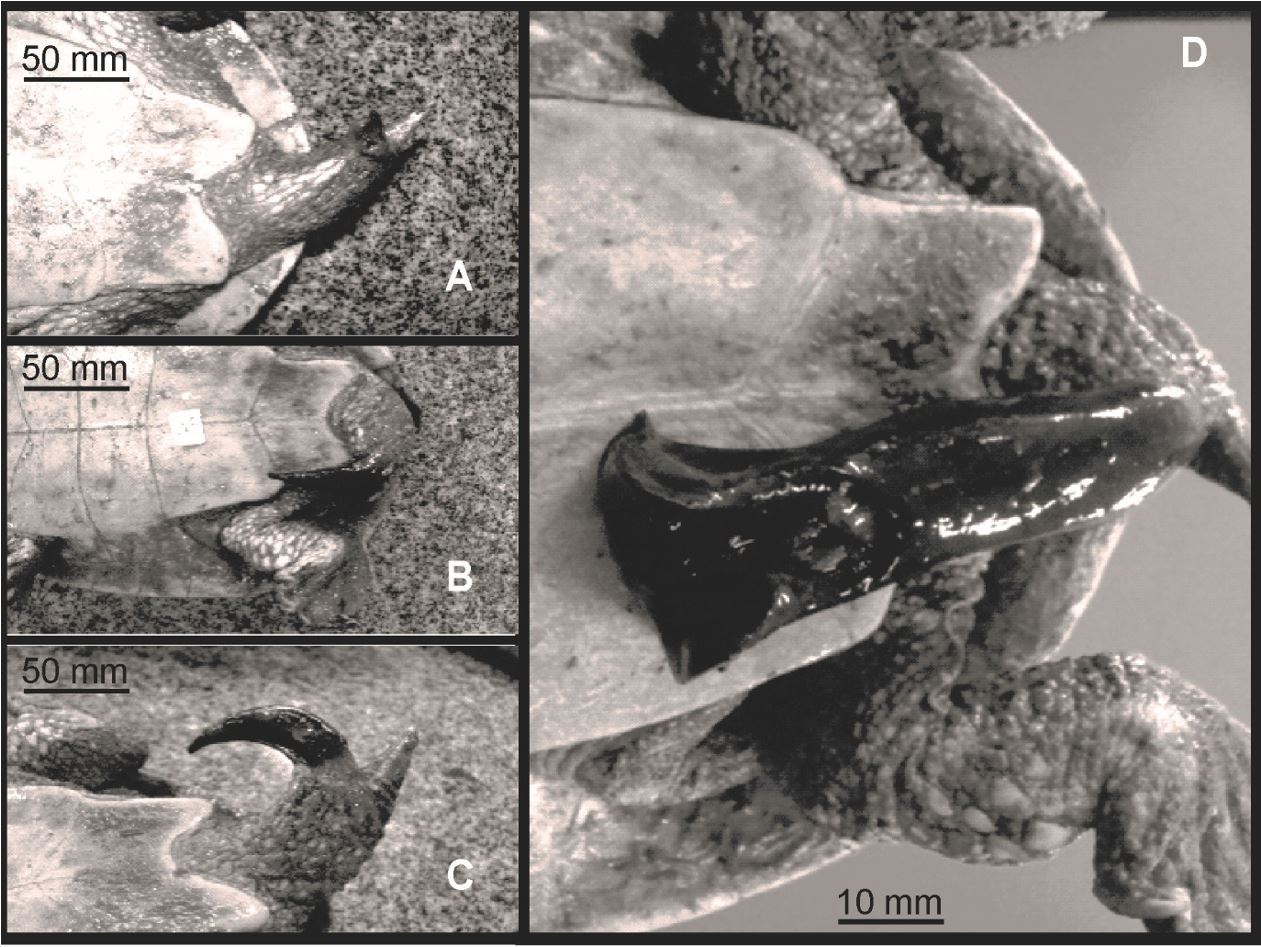Abstract
The sexing of species is an important tool for population management. In tortoises and turtles, sexing is usually done according to secondary characteristics, such as plastron morphology or phallus eversion techniques. In this paper, we present the phallus eversion method and compare its efficiency to other existing techniques. This new method aims at shortening the management time and reducing the physical aftereffects on the animals, fostering the clinical and reproductive management of Geoffroy’s side-necked turtle (Phrynops geoffroanus) and related species. A sample of fifty individuals was taken in the central region of Piauí state, Northeastern Brazil. The proposed method consisted of moving the head from its resting position. The methods achieving a success rate higher than 80% were compared to each other as for the stimulation time required for phallus eversion. The method as here proposed achieved 100% efficiency in the sex determination of specimens with a linear carapace length between 10 and 34 cm. Also, when compared to the second most efficient method, it substantially reduced the time needed for managing the specimens (91%), avoiding possible sequelae in the individuals handled.
Keywords:
tortoises; turtles; sex ratio; phallus exposure; sexual dimorphism

 Thumbnail
Thumbnail
 Thumbnail
Thumbnail
 Thumbnail
Thumbnail
 Thumbnail
Thumbnail



